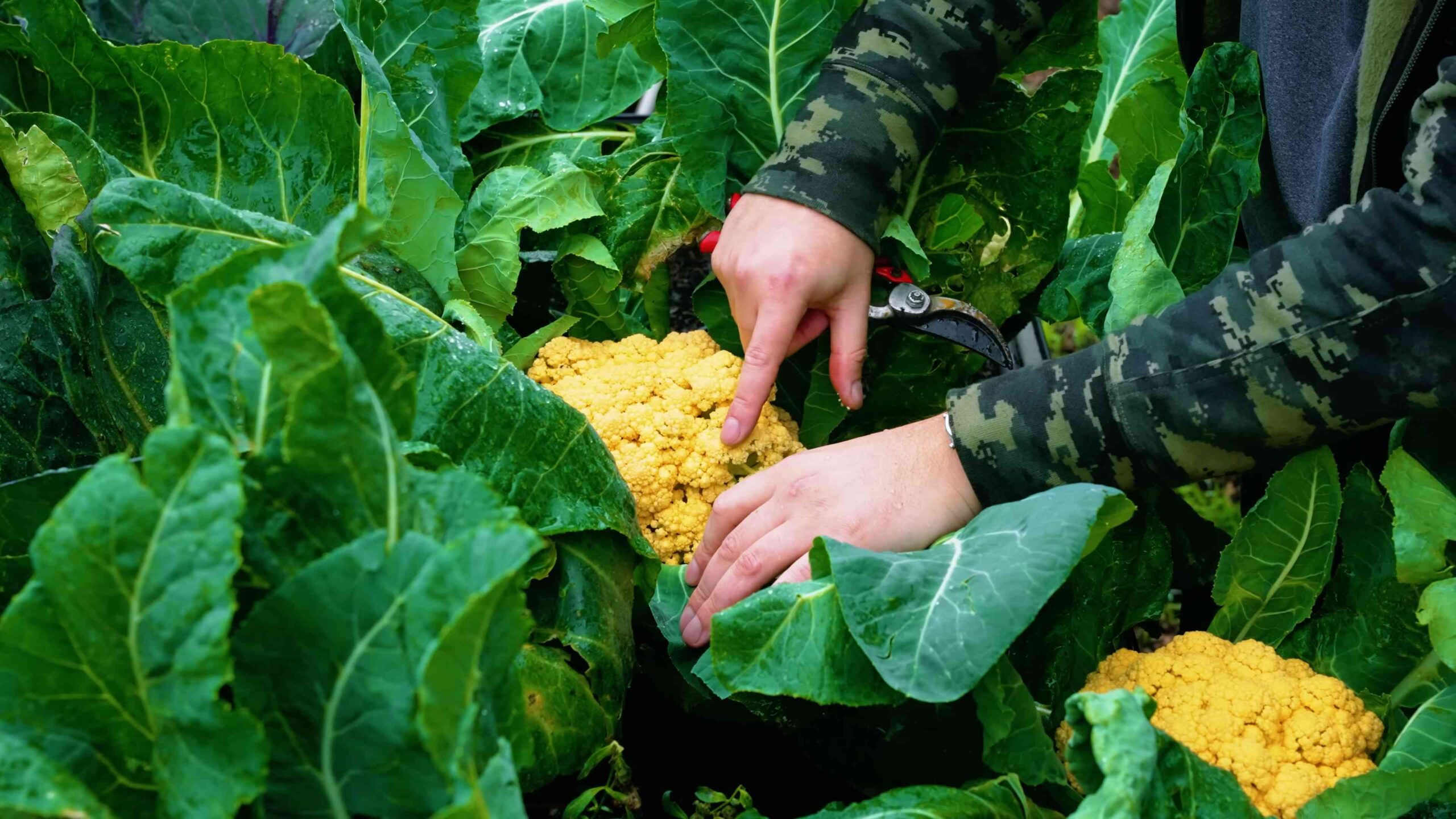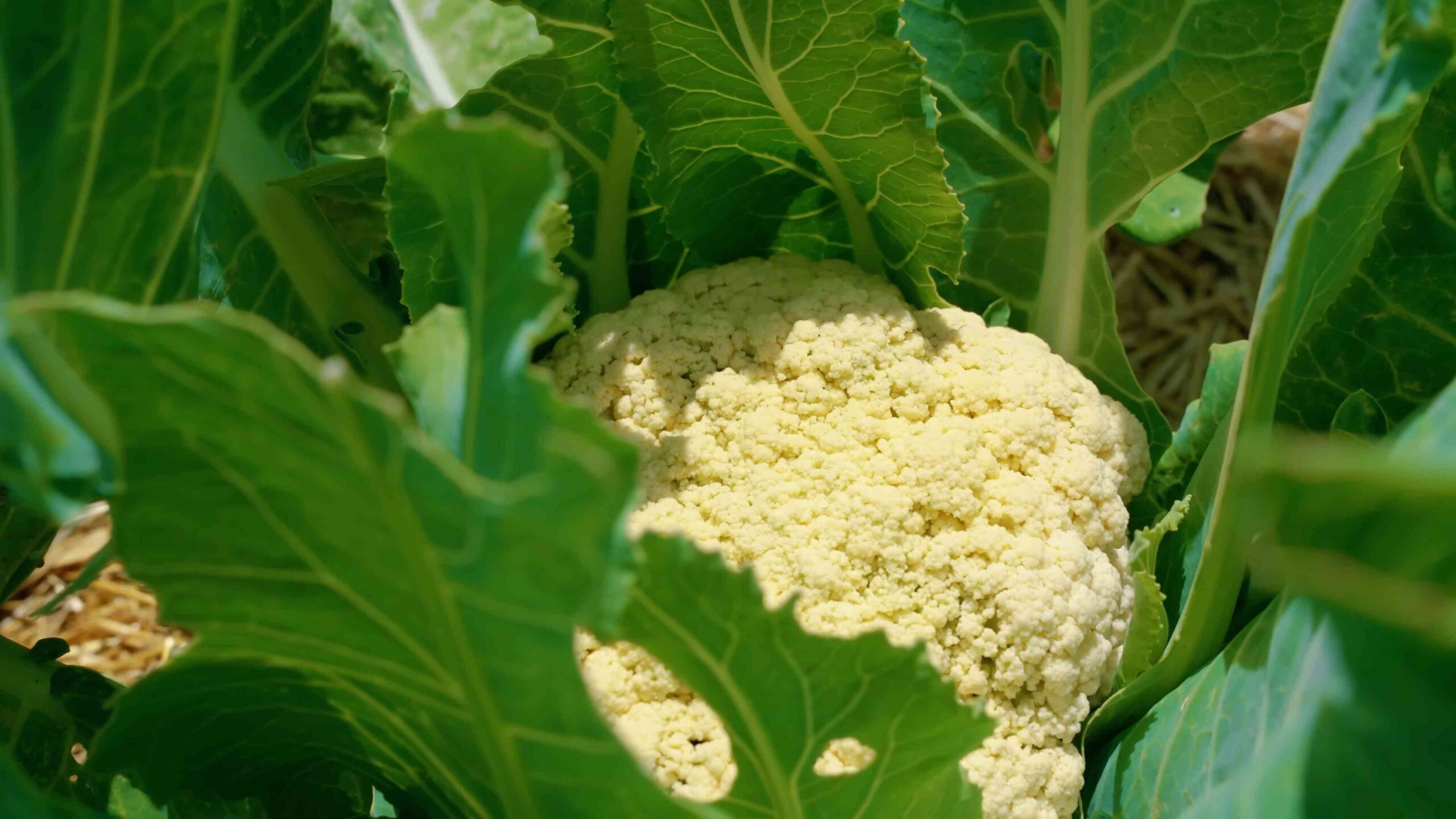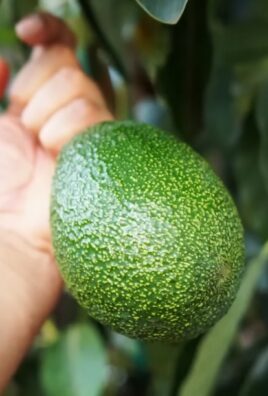Growing Cauliflower at Home might seem daunting, but trust me, with a few clever tricks and a little DIY spirit, you can harvest your own delicious, creamy cauliflower right in your backyard! Imagine serving a vibrant cauliflower gratin made with produce you nurtured from seed to table. That’s the magic we’re unlocking today.
Cauliflower’s journey from the Mediterranean to our plates is a fascinating one. Cultivated for centuries, it was once a prized vegetable reserved for the elite. Now, thanks to advancements in agriculture and a growing interest in home gardening, we can all enjoy this nutritional powerhouse. But let’s be honest, store-bought cauliflower can sometimes be bland and expensive. That’s where our DIY adventure comes in!
Why should you bother with these DIY tricks for growing cauliflower at home? Because fresh, homegrown cauliflower tastes infinitely better! Plus, you control the growing process, ensuring it’s free from unwanted chemicals. In this article, I’ll share my favorite hacks and simple DIY solutions to tackle common challenges, from pest control to soil preparation. Get ready to ditch the grocery store cauliflower and embrace the satisfaction of harvesting your own beautiful, homegrown heads. Let’s get started!

Growing Cauliflower at Home: A Beginner’s Guide
Okay, so you want to grow cauliflower at home? Awesome! It might seem a little intimidating at first, but trust me, with a little patience and the right know-how, you can totally do it. I’ve grown cauliflower in my own garden for years, and I’m going to walk you through everything you need to know, from seed to harvest.
Choosing the Right Cauliflower Variety
First things first, let’s talk about cauliflower varieties. There are tons of different types, and choosing the right one for your climate and growing season is super important.
* **Consider your climate:** Some varieties are better suited for warmer climates, while others thrive in cooler temperatures.
* **Think about your growing season:** Early-maturing varieties are great if you have a short growing season.
* **Explore different colors:** Did you know cauliflower comes in more than just white? You can find purple, orange, and even green varieties!
Here are a few popular varieties to get you started:
* **Snowball Y Improved:** A classic white variety, known for its reliability and good flavor. It matures relatively quickly.
* **Graffiti:** A beautiful purple cauliflower that adds a pop of color to your garden and your plate.
* **Cheddar:** An orange variety with a mild, slightly sweet flavor.
* **Romanesco:** This one’s a bit of a showstopper! It has a unique fractal pattern and a nutty flavor.
Getting Started: Planting Cauliflower
Now that you’ve chosen your variety, let’s get down to planting! You can either start your cauliflower from seeds indoors or buy seedlings from a local nursery. I usually prefer starting from seeds because it gives me more control over the process.
Starting Seeds Indoors
Starting seeds indoors gives your cauliflower plants a head start, especially if you live in a colder climate.
1. **Gather your supplies:** You’ll need seed starting trays or small pots, seed starting mix, cauliflower seeds, and a spray bottle.
2. **Fill the trays/pots with seed starting mix:** Make sure the mix is moist but not soggy.
3. **Sow the seeds:** Plant 2-3 seeds per cell or pot, about 1/4 inch deep.
4. **Water gently:** Use a spray bottle to mist the soil.
5. **Provide warmth and light:** Place the trays/pots in a warm location (around 70-75°F) and provide plenty of light. A grow light works great, or you can use a sunny windowsill.
6. **Keep the soil moist:** Water regularly, but don’t overwater.
7. **Thin the seedlings:** Once the seedlings have a few true leaves, thin them out, leaving only the strongest seedling in each cell or pot.
Transplanting Seedlings Outdoors
Once your seedlings are big enough and the weather is right, it’s time to transplant them outdoors.
1. **Harden off the seedlings:** This is a crucial step! Gradually acclimate the seedlings to outdoor conditions by exposing them to increasing amounts of sunlight and fresh air over a period of 7-10 days.
2. **Prepare the soil:** Cauliflower needs well-drained, fertile soil with a pH of 6.0-7.0. Amend the soil with compost or other organic matter to improve drainage and fertility.
3. **Choose a sunny location:** Cauliflower needs at least 6 hours of sunlight per day.
4. **Plant the seedlings:** Space the seedlings about 18-24 inches apart. Dig a hole that’s slightly larger than the root ball, gently remove the seedling from its container, and place it in the hole. Backfill with soil and water thoroughly.
5. **Mulch around the plants:** Mulch helps to retain moisture, suppress weeds, and regulate soil temperature.
Caring for Your Cauliflower Plants
Once your cauliflower plants are in the ground, it’s important to provide them with the care they need to thrive.
* **Watering:** Cauliflower needs consistent moisture, especially during head formation. Water deeply and regularly, especially during dry spells.
* **Fertilizing:** Feed your cauliflower plants with a balanced fertilizer every 2-3 weeks. You can also use compost tea or other organic fertilizers.
* **Weeding:** Keep the area around your cauliflower plants free of weeds. Weeds compete with the plants for nutrients and water.
* **Pest control:** Keep an eye out for pests like cabbage worms, aphids, and flea beetles. You can use organic pest control methods like insecticidal soap or neem oil to control these pests.
* **Blanching (for white varieties):** This is an optional step, but it helps to keep the cauliflower head white. When the head is about 2-3 inches in diameter, tie the outer leaves together over the head to protect it from sunlight.
Dealing with Common Cauliflower Problems
Even with the best care, you might encounter some problems while growing cauliflower. Here are a few common issues and how to deal with them:
* **Buttoning:** This is when the cauliflower head forms prematurely and stays small. It’s often caused by stress, such as lack of water or nutrients. Make sure your plants are getting enough water and fertilizer.
* **Bolting:** This is when the cauliflower plant starts to flower prematurely. It’s often caused by hot weather. Choose heat-tolerant varieties and provide shade during the hottest part of the day.
* **Clubroot:** This is a fungal disease that affects the roots of cauliflower plants. It can cause the plants to wilt and die. Prevent clubroot by improving soil drainage and rotating your crops.
* **Cabbage worms:** These are green caterpillars that can eat the leaves of your cauliflower plants. Control them with Bacillus thuringiensis (Bt), an organic insecticide.
Harvesting Your Cauliflower
The moment you’ve been waiting for! Harvesting your cauliflower is the most rewarding part of the process.
1. **Check for maturity:** Cauliflower is ready to harvest when the head is firm, compact, and about 6-8 inches in diameter (depending on the variety).
2. **Cut the head:** Use a sharp knife to cut the head from the plant, leaving a few leaves attached to protect the head.
3. **Harvest in the morning:** Harvest cauliflower in the morning, when the temperatures are cooler.
4. **Store properly:** Store cauliflower in the refrigerator for up to a week.
Step-by-Step Instructions: From Seed to Harvest
Let’s break down the entire process into easy-to-follow steps:
1. **Choose your cauliflower variety:** Consider your climate, growing season, and personal preferences.
2. **Start seeds indoors (optional):** Sow seeds in seed starting mix, provide warmth and light, and keep the soil moist.
3. **Harden off seedlings:** Gradually acclimate seedlings to outdoor conditions.
4. **Prepare the soil:** Amend the soil with compost or other organic matter.
5. **Transplant seedlings outdoors:** Space seedlings 18-24 inches apart in a sunny location.
6. **Water regularly:** Provide consistent moisture, especially during head formation.
7. **Fertilize every 2-3 weeks:** Use a balanced fertilizer or organic fertilizer.
8. **Weed regularly:** Keep the area around the plants free of weeds.
9. **Control pests:** Use organic pest control methods to protect your plants.
10. **Blanch (for white varieties):** Tie the outer leaves together over the head when it’s about 2-3 inches in diameter.
11. **Harvest when the head is firm and compact:** Cut the head from the plant with a sharp knife.
12. **Store in the refrigerator:** Enjoy your homegrown cauliflower!
Tips for Success
Here are a few extra tips to help you succeed with growing cauliflower:
* Start with good quality seeds or seedlings. This will give your plants the best possible start.
* Provide consistent moisture. Cauliflower needs plenty of water, especially during head formation.
* Fertilize regularly. Cauliflower is a heavy feeder and needs plenty of nutrients.
* Protect your plants from pests. Cabbage worms and other pests can damage your cauliflower plants.
* Be patient. It takes time for cauliflower to mature, so don’t get discouraged if you don’t see results right away.
Growing cauliflower at home can be a rewarding experience. With a little planning and effort, you can enjoy fresh, delicious cauliflower from your own garden. Good luck, and happy gardening!

Conclusion
So, there you have it! Growing cauliflower at home might seem daunting at first, but with a little patience, the right techniques, and this comprehensive guide, you’ll be harvesting your own delicious, homegrown cauliflower in no time. We’ve covered everything from seed selection and soil preparation to pest control and harvesting, equipping you with the knowledge you need to succeed.
Why is this DIY trick a must-try? Because nothing beats the taste of freshly harvested vegetables, especially when you’ve nurtured them from seed to table. Store-bought cauliflower simply can’t compare to the crispness, flavor, and satisfaction you’ll get from your own homegrown crop. Plus, you’ll have complete control over the growing process, ensuring your cauliflower is free from harmful pesticides and chemicals. You’ll also be reducing your carbon footprint by shortening the food supply chain.
But the benefits don’t stop there. Growing your own cauliflower is a fantastic way to connect with nature, learn new skills, and enjoy the therapeutic benefits of gardening. It’s a rewarding experience that can bring joy and satisfaction to your life.
Looking for variations? Consider experimenting with different cauliflower varieties. While white cauliflower is the most common, you can also grow purple, orange, or green varieties for a splash of color in your garden and on your plate. Each variety offers a slightly different flavor profile, adding excitement to your culinary creations. You can also try succession planting, sowing seeds every few weeks to ensure a continuous harvest throughout the growing season. Another fun variation is to try growing cauliflower in containers if you have limited garden space. Just be sure to choose a large container and provide adequate drainage.
Don’t be afraid to get your hands dirty and embrace the challenges that come with gardening. Remember, even experienced gardeners face setbacks from time to time. The key is to learn from your mistakes and keep experimenting.
We are confident that with the information provided, you can successfully grow cauliflower at home. So, grab your seeds, prepare your soil, and get ready to embark on this exciting gardening adventure. We encourage you to try this DIY trick and experience the joy of harvesting your own delicious cauliflower.
And most importantly, we want to hear about your experience! Share your successes, challenges, and tips in the comments below. Let’s create a community of cauliflower growers and learn from each other. Post pictures of your homegrown cauliflower, share your favorite recipes, and inspire others to give it a try. Together, we can cultivate a love for gardening and enjoy the bounty of our own backyards. Happy gardening!
Frequently Asked Questions (FAQ)
What is the best time of year to start growing cauliflower?
The best time to start growing cauliflower depends on your climate. Cauliflower is a cool-season crop, so it thrives in temperatures between 60°F and 70°F (15°C and 21°C). In areas with mild winters, you can plant cauliflower in the fall for a winter or early spring harvest. In areas with cold winters, you should start seeds indoors 6-8 weeks before the last expected frost and transplant them outdoors in the spring after the danger of frost has passed. For a fall harvest in colder climates, start seeds indoors in late spring or early summer.
How much sunlight does cauliflower need?
Cauliflower needs at least 6 hours of direct sunlight per day to thrive. Choose a sunny location in your garden where your cauliflower plants will receive ample sunlight throughout the day. If you live in a particularly hot climate, some afternoon shade can be beneficial to prevent the plants from overheating.
What type of soil is best for growing cauliflower?
Cauliflower prefers well-drained, fertile soil that is rich in organic matter. The ideal soil pH is between 6.0 and 7.0. Before planting, amend your soil with compost, aged manure, or other organic matter to improve its fertility and drainage. You can also add a balanced fertilizer to provide your cauliflower plants with the nutrients they need to grow.
How often should I water my cauliflower plants?
Cauliflower plants need consistent moisture to thrive. Water your plants deeply and regularly, especially during hot, dry weather. Aim to keep the soil consistently moist but not waterlogged. A good rule of thumb is to water when the top inch of soil feels dry to the touch. Mulching around your plants can help retain moisture and suppress weeds.
What are some common pests and diseases that affect cauliflower?
Cauliflower is susceptible to several pests and diseases, including cabbage worms, aphids, flea beetles, clubroot, and black rot. To prevent pest and disease problems, practice good garden hygiene, such as removing plant debris and weeds. You can also use row covers to protect your plants from pests. If you encounter pests or diseases, treat them promptly with appropriate organic or chemical controls.
How do I know when my cauliflower is ready to harvest?
Cauliflower is ready to harvest when the head is firm, compact, and about 6-8 inches in diameter. The florets should be tightly closed and white or the color of the variety you are growing. Use a sharp knife to cut the head from the plant, leaving a few leaves attached to protect the head.
Can I grow cauliflower in containers?
Yes, you can grow cauliflower in containers, but you’ll need to choose a large container that is at least 12 inches in diameter and 12 inches deep. Use a well-draining potting mix and provide your plants with plenty of sunlight and water. Container-grown cauliflower may require more frequent fertilization than cauliflower grown in the ground.
What can I do if my cauliflower head is loose or discolored?
A loose or discolored cauliflower head can be caused by several factors, including heat stress, nutrient deficiencies, or pest damage. If your cauliflower head is loose, try providing more shade or watering more frequently. If the head is discolored, check for pests or diseases and treat them accordingly. You can also try fertilizing your plants with a balanced fertilizer to correct any nutrient deficiencies.
How do I blanch cauliflower?
Blanching cauliflower helps to keep the head white and prevents it from developing a bitter flavor. To blanch cauliflower, tie the outer leaves together over the developing head when it is about 2-3 inches in diameter. This will protect the head from sunlight and keep it white.
Can I eat the leaves of the cauliflower plant?
Yes, the leaves of the cauliflower plant are edible and can be cooked like other leafy greens. They have a slightly stronger flavor than the florets but are still delicious and nutritious. You can sauté them, steam them, or add them to soups and stews.





Leave a Comment